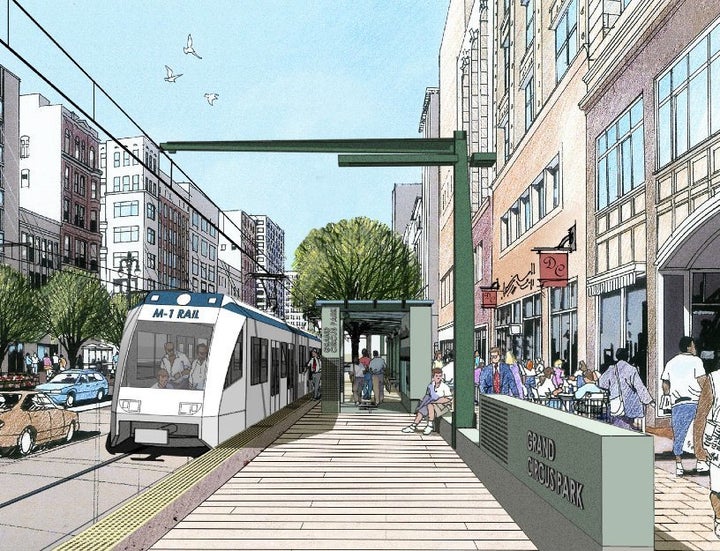
After several months hammering out the details, the backers behind a plan to put a 3.1-mile rail track down Woodward Ave. in Detroit submitted a report to government agencies claiming they have secured most of the necessary funding and will take responsibility for 10 years of upkeep.
The M-1 Rail investor group behind the plan for the line, which will run along Woodward from downtown Detroit to New Center, spent the last 90 days writing a hefty, 1,200-page feasibility report at the behest of U.S. Secretary of Transportation Ray LaHood. On Friday, the group submitted the report to the U.S. Department of Transportation, the Federal Transit Authority, Michigan Gov. Rick Snyder, Detroit Mayor Dave Bing and community stakeholders. The takeaway? The authors think their plan is very feasabile.
In the report, the group bumped up its estimate of total project costs from $125 to $137 million. M-1 has raised $84 million already and expects to receive $31 million in federal grants and tax credits.
Although the group says the total cost will be shy of the higher estimate, planners are held up by the mystery of "what lies beneath Woodward Avenue," making it difficult to determine exact costs. The plan calls for building the M-1 line concurrent with the Michigan Department of Transportation's planned reconstruction on Woodward in 2013, to mitigate some of the risk.
The rail system is expected to cost $5.1 million to operate annually; 80 percent of that to be covered by fares and advertising. Members of M-1 Rail pledged to endow a $10 million fund to privately support operating costs for up to 10 years until 2025, at which point they would hand the system's operation over to a public entity.
The M-1 Rail plan has kept up momentum despite mixed public reaction. The previous incarnation was a nine-mile line that ran all the way from downtown to 8 Mile Road and was expected to serve commuters between the city and suburbs. But in December, city and state officials announced they would pursue a rapid-transit bus system rather than put their weight behind light rail.
In January, officials met to consider the possibilities behind the shorter rail proposal. The newer light rail plan, scaled back dramatically, has key differences. M-1 executive Matt Cullen told The Huffington Post in January that the new system was closer to a streetcar than true light rail, on its own track but still tied to traffic.
While proponents think the line would be crucial in spurring development along the Woodward corridor, some have raised concerns about the project's longterm viability. Transportation Riders United Executive Director Megan Owens previously expressed concern that the new plan could not easily be expanded or connected to other transportation systems.
A spokeswoman for M-1 said the group expects to hear back from officials in several weeks, and until then members will continue to work on plans, particularly regarding community outreach and engineering.
To see the official summary of the report, see the M-1 Rail website.
